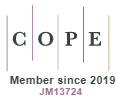Investigating the Effect of Theoretical and Laboratory Teaching on the Students’ Academic Performance in Mechanical Engineering
DOI:
https://doi.org/10.15415/jotitt.2015.31004Keywords:
PBL, instruction design, learning stylesAbstract
In order to improve the students’ learning experience in the Mechanical Engineering (ME) modules, a problem based learning (PBL) approach is used and the learning activities are designed to provide students with an opportunity to learn theory and perform the experiments to develop a better understanding of the subject. The aim of this action research is to investigate the effect of the theoretical and laboratory based instructions in the Engineering Applications module on the students’ academic performance. The sample is composed of 106 students from Edinburgh Napier University (ENU) in Scotland. The data is comprised of the marks obtained by the students in the summative design assessment, based on the theoretical studies and the two online quizzes based on the laboratory experiments. The results show that the module’s instructions are mostly focused on the experimental studies which indicates that the experimental studies are not supporting the theoretical studies. It illustrates that the theoretical studies and the experimental studies indirectly support each other. It also shows that the students are not provided with an adequate opportunities to develop the engineering application skills. This implies a need to constructively align such modules, in order to improve the student’s learning experience. The concept mapping tools can be used to evaluate the effectiveness of the teaching practices on the students learning experience. The learning activities design should take into consideration the learning styles of the students to encourage them to actively participate in the PBL environment. In addition, the educational institutions should provide support to the academics to improve their facilitation skills in the PBL environment. A suggestion for further research is made to evaluate the effectiveness of the theoretical and experimental teaching instructions based on the Bloom’s Taxonomy on the students learning experience.
Downloads
References
[2] Biggs, J., Tang, C. (2007). Teaching for Quality Learning at University. Open University Press.
[3] Bloom, B. S., Engelhart, M. D., Furst, E. J., Hill, W. H., & Krathwohl, D. R. (1956). Taxonomy of educational objectives (1st ed.). New York: McKay Co D.
[4] Domin, D. S. (1999). A Review of Laboratory Instruction Styles. Journal of Chemical Education, 76(4), 543. http://dx.doi.org/10.1021/ed076p543
[5] Donnelly, R. (2005). Using Technology to Support Project and Problem-based Learning, 157–177.
[6] Dumitrescu, C., Olteanu, R. L., Gorghiu, L. M., Gorghiu, G., & State, G. (2009). Using virtual experiments in the teaching process. Procedia - Social and Behavioral Sciences, 1(1), 776–779. http://dx.doi.org/10.1016/j.sbspro.2009.01.138
[7] Erhan, D., Courville, A., & Vincent, P. (2010). Why Does Unsupervised Pre-training Help Deep Learning? Journal of Machine Learning Research, 11, 625–660. Retrieved from http://portal.acm.org/citation.cfm?id=1756025
[8] Felder, R. M., & Brent, R. (2004). the Abc S of Engineering Education: Abet, Bloom S Taxonomy, Cooperative Learning, and So on. Engineering, 1. Retrieved from http://156.35.81.1/docs/IJPEI/ABET_Criteria_PTE/ABET_Bloom’s_taxonomyASEE04.pdf
[9] Felder, R.M., Silverman, L. K. (1988). Learning and Teaching Styles. Engineering Education, 78(7), 674–681.
[10] Fink, D., Ambrose, S., Wheeler, D. (2005). Professional EngineeringEducator.pdf. Journal of Engineering Education, 1(1), 185–194.http://dx.doi.org/10.1002/j.2168-9830.2005.tb00837.x
[11] Günes, T., Dilek, N.S., Çelikoglu, M., & Demir, E. S. (2011). The using levels of the teaching methods and techniques by teachers. Procedia - Social and Behavioral Sciences, 15, 1092–1096. http://dx.doi.org/10.1016/j.sbspro.2011.03.244
[12] Gupta,S.C.,Kapoor,V.K. (2007). Fundamentals of Applied Statistics. Sultan Chand & Sons.
[13] Hair, J.F., Black, W.C., Babin, B.J., and Anderson, R. E., Hair, J.F., Black, W.C., Babin, B.J., and Anderson, R. E. (2009). Multivariate Data Analysis - A Global Perspective. New Jersey: Pearson Education Inc.
[14] Houghton, Dr. W. (2004). Learning and Teaching Theory Engineering Subject Centre Guide : Learning and Teaching Theory for Engineering Academics.
[15] Kverenbekk, T. (2012). Argumentation in Theory and Practice : Gap or Equilibrium ?, 32(3), 288–305.
[16] Manolis, C., Burns, D. J., Assudani, R., & Chinta, R. (2013). Assessing experiential learning styles: A methodological reconstruction and validation of the Kolb Learning Style Inventory. Learning and Individual Differences, 23, 44–52. http://dx.doi.org/10.1016/j.lindif.2012.10.009
[17] Mantri, A., Dutt, S., Gupta, J. P., & Chitkara, M. (2008). Design and Evaluation of a PBL-Based Course in Analog Electronics. IEEE Transactions on Education, 51(4), 432–438.http://dx.doi.org/10.1109/TE.2007.912525
[18] Ming-Chao, L., & Jing, L. (2012). Goal-Oriented Method and Practice in Experimental Teaching. IERI Procedia, 2, 480–484. http://dx.doi.org/10.1016/j.ieri.2012.06.120
[19] Noble, C., O’Brien, M., Coombes, I., Shaw, P. N., & Nissen, L. (2011). Concept mapping to evaluate an undergraduate pharmacy curriculum. American Journal of Pharmaceutical Education, 75(3), 55. http://dx.doi.org/10.5688/ajpe75355
[20] Plaza, C. M., Draugalis, J. R., Slack, M. K., Skrepnek, G. H., & Sauer, K. A. (2007). Curriculum mapping in program assessment and evaluation. American Journal of Pharmaceutical Education, 71(2), 20. http://dx.doi.org/10.5688/aj710220
[21] Richardson, J. T. E. (2011). Approaches to studying, conceptions of learning and learning styles in higher education. Learning and Individual Differences, 21(3), 288–293. http://dx.doi.org/10.1016/j.lindif.2010.11.015
[22] Standal, O. F., Moen, K. M., & Moe, V. F. (2013). Theory and practice in the context of practicum: The perspectives of Norwegian physical education student teachers. European Physical Education Review, 20(2), 165–178. http://dx.doi.org/10.1177/1356336X13508687
[23] University, O. (2013). Compendium Institute. Retrieved January 1, 2015, from http://compendium.open.ac.uk/institute/download/download.htm
Downloads
Published
How to Cite
Issue
Section
License
Articles in Journal on Today's Ideas - Tomorrow's Technologies (J. Today’s Ideas - Tomorrow’s Technol.) by Chitkara University Publications are Open Access articles that are published with licensed under a Creative Commons Attribution- CC-BY 4.0 International License. Based on a work at https://jotitt.chitkara.edu.in. This license permits one to use, remix, tweak and reproduction in any medium, even commercially provided one give credit for the original creation.
View Legal Code of the above mentioned license, https://creativecommons.org/licenses/by/4.0/legalcode
View Licence Deed here https://creativecommons.org/licenses/by/4.0/
 |
Journal on Today's Ideas - Tomorrow's Technologies by Chitkara University Publications is licensed under a Creative Commons Attribution 4.0 International License. Based on a work at https://jotitt.chitkara.edu.in |











